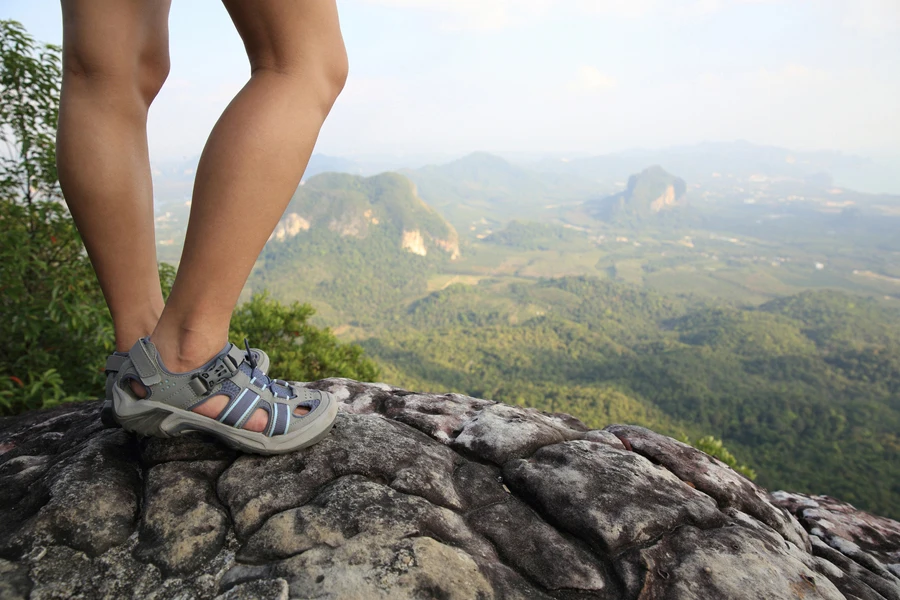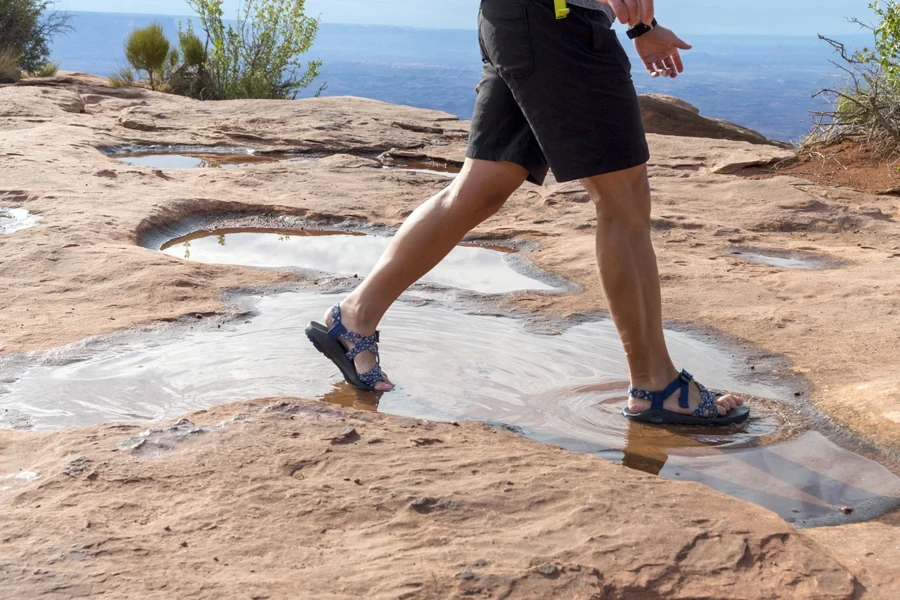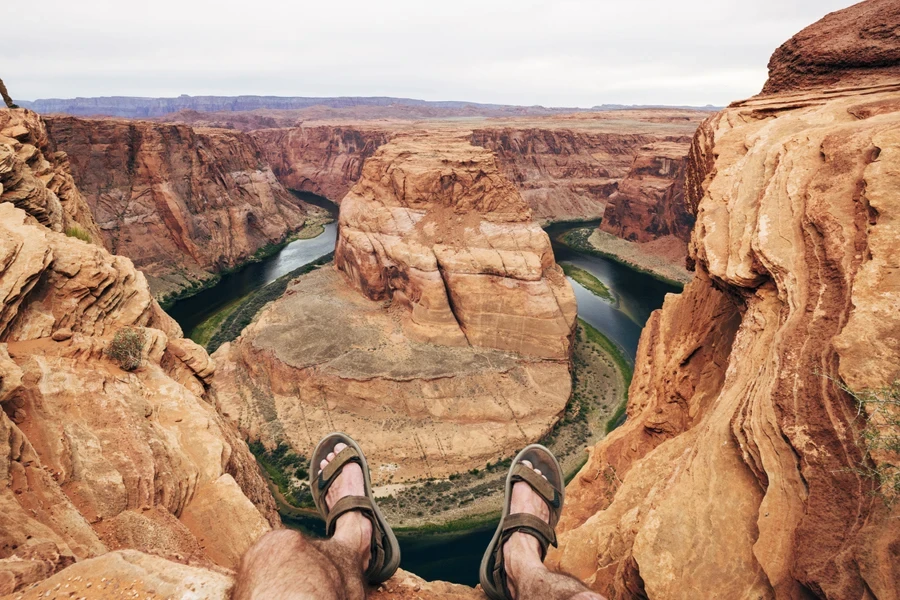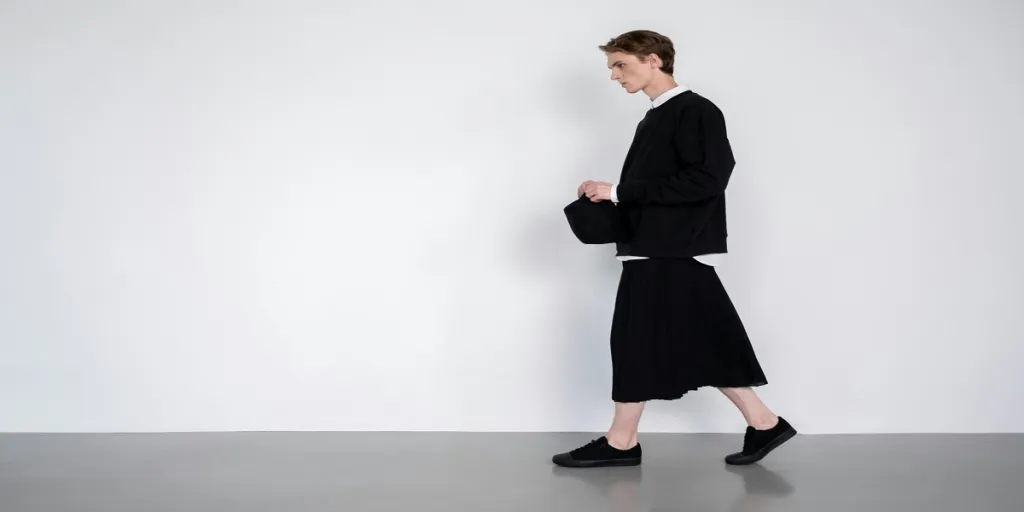Sometimes, the weather gets so hot that consumers may overheat during activities like walking. In fact, wearing thick shoes in such conditions can discourage many customers from enjoying their walking sessions. However, women and men don’t need to become idle—they can reach for walking (or sports) sandals instead.
These sandals have all the necessary features and support for hikers to walk in the heat and keep their feet cool and dry when walking long distances. Even casual commuters can benefit from this amazing footwear. Nevertheless, choosing the perfect pair of walking sandals can feel overwhelming, especially since retailers must consider many options.
This buyer’s guide will help businesses know the key features to look for when stocking the best sandals for walking. It’ll also explore five options from top brands to see what they did right.
Table of Contents
How big is the global sandals market?
What to consider when choosing the best sandals to stock
Open-toe vs. closed-toe sandals: What are the differences?
Final words
How big is the global sandals market?
The global sandals market currently sits at US$ 32.6 billion in 2024, and projections say it will reach US$ 43.25 billion by 2032 at a 3.6% compound annual growth rate (CAGR). The market’s revenue growth results from the increasing desire for stylish, comfortable, and affordable footwear, like flip-flops and sports sandals.
Experts say Asia Pacific will hold the largest share in the sandals market. They believe the rapid expansion of ecommerce businesses dealing with sandals in the region will see an impressive revenue boost over the forecast period. However, they also say North America will also have a large market share, thanks to branded sandals increasing in popularity.
What to consider when choosing the best sandals to stock
1. Arch support

Picking the right walking sandals starts with support. Good arch support doesn’t focus on wearers feeling comfortable in the moment. It’s necessary to help consumers avoid long-term pain and injuries.
Businesses must consider sandals that focus more on supporting the user’s arches. Consumers will want a pair that adapts to their foot’s natural shape and evenly spreads their weight every step. Here’s a table showing the different arch supports for walking sandals, who they’re perfect for, and other helpful information.
| Arch type | Best for | Characteristics | Benefits |
| Neutral | People with neutral arches. | Balance and supportive base. | Maintains proper foot alignment and reduces strain. |
| Low | People with flat feet. | Additional support to the arch. | Prevents overpronation and reduces ankle stress. |
| High | People with high arches. | Extra cushioning and support | Alleviates pain in feet, ankles, and lower legs. |
2. Material quality and durability

Since consumers will walk on different terrains with their sandals, they must withstand whatever the adventure throws at them. That’s where material strength and durability come in. Consumers often choose the best material for their needs based on what they want.
For instance, leather is a classic choice for consumers who want toughness and durability. On the other hand, those who want something lighter (and quick-drying) will prefer synthetic materials. Here’s a table with more details on what each walking sandal material offers.
| Materials | Pros | Cons |
| Leather | ● Durable ● Breathable ● Comfortable | ● Expensive ● Requires maintenance |
| Synthetic materials (e.g., PVC and PU) | ● Affordable ● Lightweight ● Easy to clean ● Quick-dry | ● Not as breathable as other options |
| Cork | ● Natural ● Comfortable ● Arch support | ● Less durable than other materials |
| Rubber | ● Durable ● Water-resistant | ● Heavy ● Less breathable |
| Fabric (e.g., canvas and mesh) | ● Lightweight ● Breathable | ● Not as durable or supportive as other materials |
3. Outsole (protection and grip)

The outsole, or just “the sole,” is the bottom layer of the walking sandals (the part that touches the ground). Manufacturers usually make them from sticky rubber compounds to give their sandals the same technical, sticky grip as running shoes or hiking boots, giving wearers good traction.
The outsoles come with lugs (those little knobs or shapes) in different sizes and shapes to offer various benefits. Bigger, deeper lugs give consumers a better grip on rocky trials or dirt, while shallower lugs work well on wet surfaces like pavement or rocks. But that’s not all.
Walking sandals can also have pointy or flat lugs. Pointer lugs help consumers push off, while flat ones are perfect for braking. Sandal outsoles should also have siping channels letting water drain if the sandals are wet—especially closed-toe variants.
4. Adaptability and custom fit

Offering consumers the right fit will help them avoid chafing and keep their walk feeling natural. Even if the fit is imperfect, walking sandals should have adjustable straps or customizable closure systems to let wearers fine-tune it to their preference. That way, consumers will get solid support without sacrificing any movement freedom.
Open-toe vs. closed-toe sandals: What are the differences?
Closed-toe and open-toe sandals offer different benefits, depending on consumers’ needs. It mostly comes down to personal preference and the kind of hiking the consumer will do. Here’s a closer look at what makes each option stand out.
Open-toe sandals: Maximum ventilation

Open-toe hiking sandals are great for hikers who want comfort and lightweight footwear, especially in warm weather. The biggest perk? Ventilation. Consumers’ feet will breathe, which helps prevent overheating and sweating on long, hot hikes—even in damp areas where managing moisture is important.
While they don’t offer the same toe protection as closed-toe models, open-toe sandals hold their own on the trail. They keep debris out, reduce irritation, and come with sturdy soles that give a solid grip on different terrains. They’re easy to slip on and dry quickly, perfect for stream crossings or beach walks.
Closed-toe sandals: Maximum protection

Closed-toe sandals are the perfect mix between hiking shoes and open sandals. Manufacturers design them to protect the feet while keeping them cool and dry on long, hot hikes. However, what makes them stand out is their ability to shield the toes and the front of the foot from injury, especially on rough terrain.
For this reason, closed-toe sandals are a great choice for unpredictable conditions, like mountain hikes. Even with this added protection, closed-toe sandals still allow for good airflow and water drainage—so not getting sweaty in these bad boys in hot or tropical climates.
But there’s more. Closed-toe sandals are also versatile. Thanks to their great grip, stability, and element protection, consumers can use them to cross streams, hike dirt trails, or explore the coast.
Final words
Hot, sweaty, and uncomfortable feet are terrible hallmarks of walking in hot weather. But consumers won’t have to endure such an unpleasant situation if they have a roomy, well-made pair of walking sandals. These sandals can easily keep feet feeling cool and fresh with enough support through the warm season, whether consumers go for long walks for days or use them for everyday wear.
Remember that the best walking sandals depend on various factors, including the different styles (open- or closed-toe), arch support (and cushioning), outsole type, material quality, and adaptability. So, consider all of them when stocking the perfect walking sandals for target consumers in 2025.




